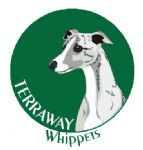Labrador Breed Standard

| Group: | Group 3 (Gundogs) |
| General Appearance: | Strongly built, short coupled, very active; broad in skull; broad and deep through chest and ribs; broad and strong over loins and hindquarters. |
| Characteristics: | Good tempered, very agile (which precludes excessive body weight or substance). Excellent nose, soft mouth, keen love of water. Adaptable, devoted companion. |
| Temperament: | Intelligent, keen and biddable, with a strong will to please. Kindly nature, with no trace of aggression or undue shyness. |
| Head And Skull: | Skull broad with defined stop; clean cut without fleshy cheeks. Jaws of medium length, powerful not snipey. Nose wide, nostrils well-developed. |
| Eyes: | Medium size, expressing intelligence and good temper; brown or hazel. |
| Ears: | Not large or heavy, hanging close to head and set rather far back. |
| Mouth: | Jaws and teeth strong with a perfect, regular and complete scissor bite, i.e. Upper teeth closely overlapping lower teeth and set square to the jaws. |
| Neck: | Clean, strong, powerful, set into well-placed shoulders. |
| Forequarters: | Shoulders long and sloping. Forelegs well-boned and straight from elbow to ground when viewed from either front or side. |
| Body: | Chest of good width and depth, with well-sprung barrel ribs (this effect not to be produced by carrying excessive weight). Level topline. Loins wide, short-coupled and strong. |
| Hindquarters: | Well-developed not sloping to tail; well turned stifle. Hocks well let down, cowhocks highly undesirable. |
| Feet: | Round, compact; well-arched toes and well-developed pads |
| Tail: | Distinctive feature, very thick towards base, gradually tapering towards tip, medium length, free from feathering, but clothed thickly all round with short, thick, dense coat, thus giving 'rounded' appearance described as 'Otter' tail. May be carried gaily but should not curl over back. |
| Gait/Movement: | Free, covering adequate ground; straight and true in front and rear. |
| Coat: | Distinctive feature, short dense without wave or feathering, giving fairly hard feel to the touch; weather resistant undercoat. |
| Colour: | Wholly black, yellow or liver/chocolate. Yellows range from light cream to red fox. Small white spot on chest permissible. |
| Sizes: | Height: Dogs 56 - 57 cms (22-22.5 ins) at withers Bitches 55 - 56 cms (21.5 - 22 ins) at withers |
| Faults: | Any departure from the foregoing points should be considered a fault and the seriousness with which the fault should be regarded should be in exact proportion to its degree and its effect upon the health and welfare of the dog, and on the dog’s ability to perform its traditional work. |
| Notes: | Male animals should have two apparently normal testicles fully descended into the scrotum. |
About Labrador Retrievers
Background
Labradors originated in Newfoundland, off the coast of Canada, and were taken to England on fishing boats in the early 19th century. Here they were developed and bred as a hunting dog, being used for retrieving game in rugged terrain and icy waters. They were popluar as tough, strong dogs with excellent scenting powers and a strong desire to please. Even today, Labrador Retrievers are the most popular breed with shooters, and they also work as police dogs, customs dogs and guide dogs for the blind.
Average Lifespan
When considering a dog, please realise that you are taking it on for its lifetime. Labradors live from between 12 - 15 years of age.
Breed Personality/Characteristics/Temperament
Labradors Retrievers are intelligent, active, fun-loving dogs, eager to please and extremely sociable. They want to be friends with everybody, and are not a "one person dog". The breed is wonderful with children, and makes a good watchdog - adopting a big deep bark to notify of any intruders.
Compatibility with other pets
Excellent.
Care Requirements
Labradors need a large, draught-proof kennel, raised several centimetres off the ground. In summer they require plenty of shade. Like all dogs, Labradors are happiest if kept fit. Adults will benefit from a daily walk of a minimum of thirty minutes, while pups will need overall periods of play. As a Labrador will need some free running, a large backyard is desirable - especially if you live in an area where having a dog off-leash in public parks is not permitted. Labradors are sociable dogs that really need to be part of a family. If left alone in a backyard most of the time, they may get up to mischief or take to persistent barking. Labradors can easily be trained to be well behaved indoors, however they shed quite a lot of hair at certain times of the year. As Labradors can also be great diggers and chewers as puppies, it is a good idea to fence an area for the dog if you are attached to your garden. Labradors have a tendency to put on weight, which can cause health problems, so their diet needs to be carefully restricted as they mature. Obesity can predispose them to diabetes, heart disease and arthritis.
Please Take Note
Conscientious breeders have their dogs x-rayed for Hip and Elbow Dysplasia (HD & ED). They will also have their dogs' eyes tested annually by a veterinary ophthalmologist to detect any disease at the earliest stage. In addition, they will have genetic testing done on any breeding stock to check for hereditary conditions such as Progressive Retinal Atrophy (PRA) and Exercise Induced Collapse (EIC) and will not breed from any affected animals.
Ideal Owner/s
Families with a well fenced yard. As Labradors can be exuberant and boisterous as youngsters, it may be difficult for either very young or elderly family members to control them unaided at this age.
